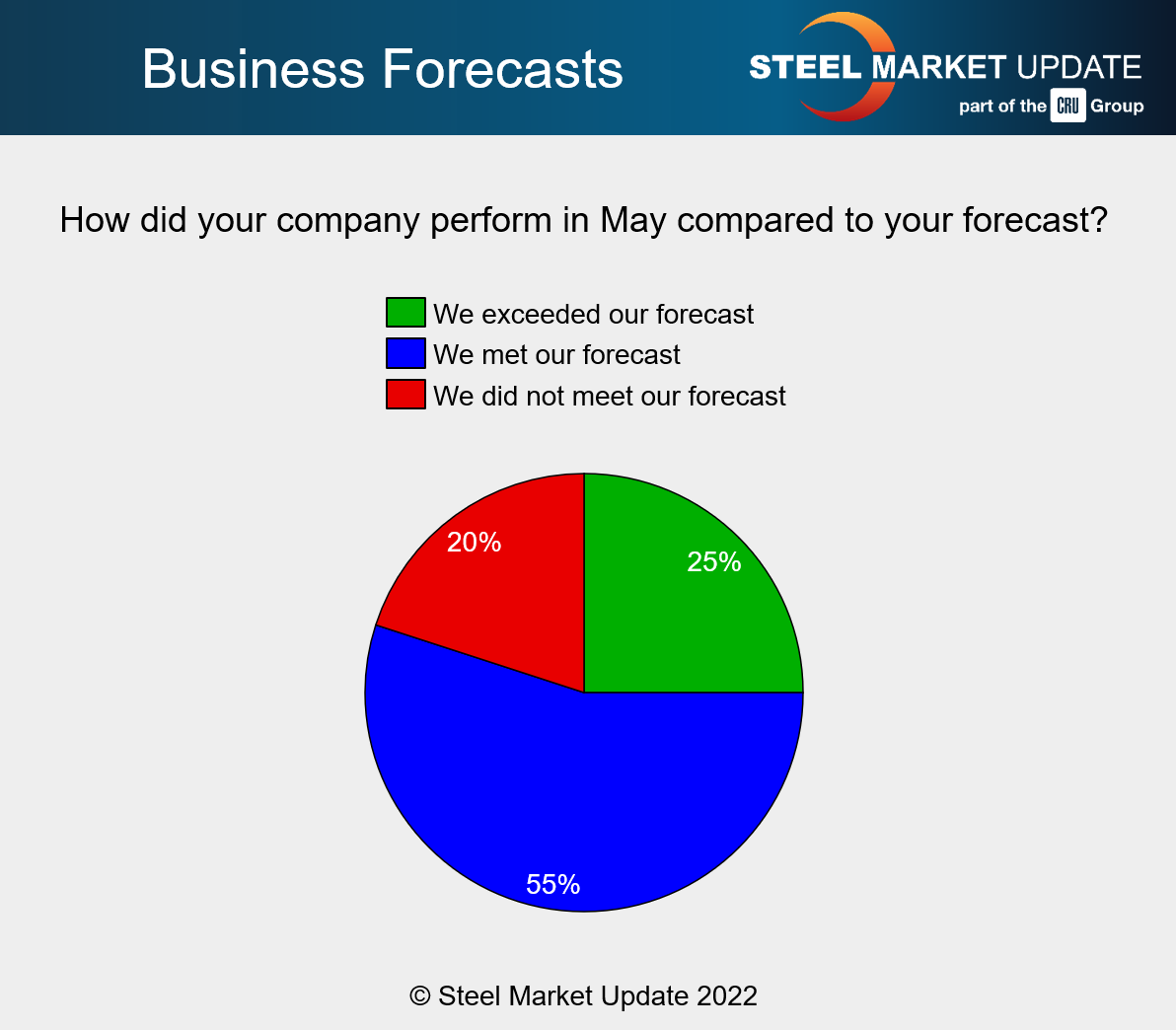SMU Data and Models

SMU Survey: Respondents Beat Forecasts in May, Concerned About June
Written by Michael Cowden
June 9, 2022
May was a good month for market participants surveyed by SMU, most of whom reported meeting or beating expectations then.
Approximately 55% of survey respondents said they met their business forecasts last month, 25% said they exceeded them, and only 20% said they missed forecast.
The big question will be June, which has seen steel price declines accelerate amid increasing concerns about demand and the broader economy.
The chart below comes from a new question that we’ve introduced to our survey, full results of which will be released on Friday. We’ll update it on a regular basis going forward.

Here is what some survey participants had to say about the issue of beating, meeting or missing forecasts.
“Exceeded volume targets.”
“We were able to pass on the price increases.”
“It was a good month, but as Jamie Dimon might say, the hurricane is here”
“Several large customers pushed back or reduced their forecasts”
“Slowed down end of month.”
“Forecast softened, orders moved out.”
“Logistics problems were our main reason” for not meeting forecast.
“Missed by over 10%.”
Editor’s note: JPMorgan Chase CEO Jamie Dimon said at an investor conference earlier this month that economic conditions might seem “fine” now but that “a hurricane” was coming. “You’d better brace yourself,” he said. “JPMorgan is bracing ourselves, and we’re going to be very conservative with our balance sheet.”
By Michael Cowden, Michael@SteelMarketUpdate.com

Michael Cowden
Read more from Michael CowdenLatest in SMU Data and Models

SMU’s June at a glance
A look at SMU data for the month of June.

SMU Survey: Buyers’ Sentiment rebounds from multi-year low
Both of SMU’s Steel Buyers’ Sentiment Indices edged higher this week. Current Sentiment rebounded from a near five-year low, while Future Sentiment rose to a two-month high

SMU flat-rolled market survey results now available
SMU’s latest steel buyers market survey results are now available on our website to all premium members.

SMU Survey: Sheet lead times pull back after early-June blip, plate holds
Following the uptick seen two weeks ago, lead times eased this week for all four sheet products tracked by SMU, while plate lead times held steady, according to this week’s market survey.

SMU Survey: Pricing power abruptly shifts to steel buyers
The majority of steel buyers responding to our latest market survey say domestic mills are more willing to talk price on sheet and plate products than they were earlier this month. Sheet negotiation rates rebounded across the board compared to early June, while our plate negotiation rate hit a full 100%.
